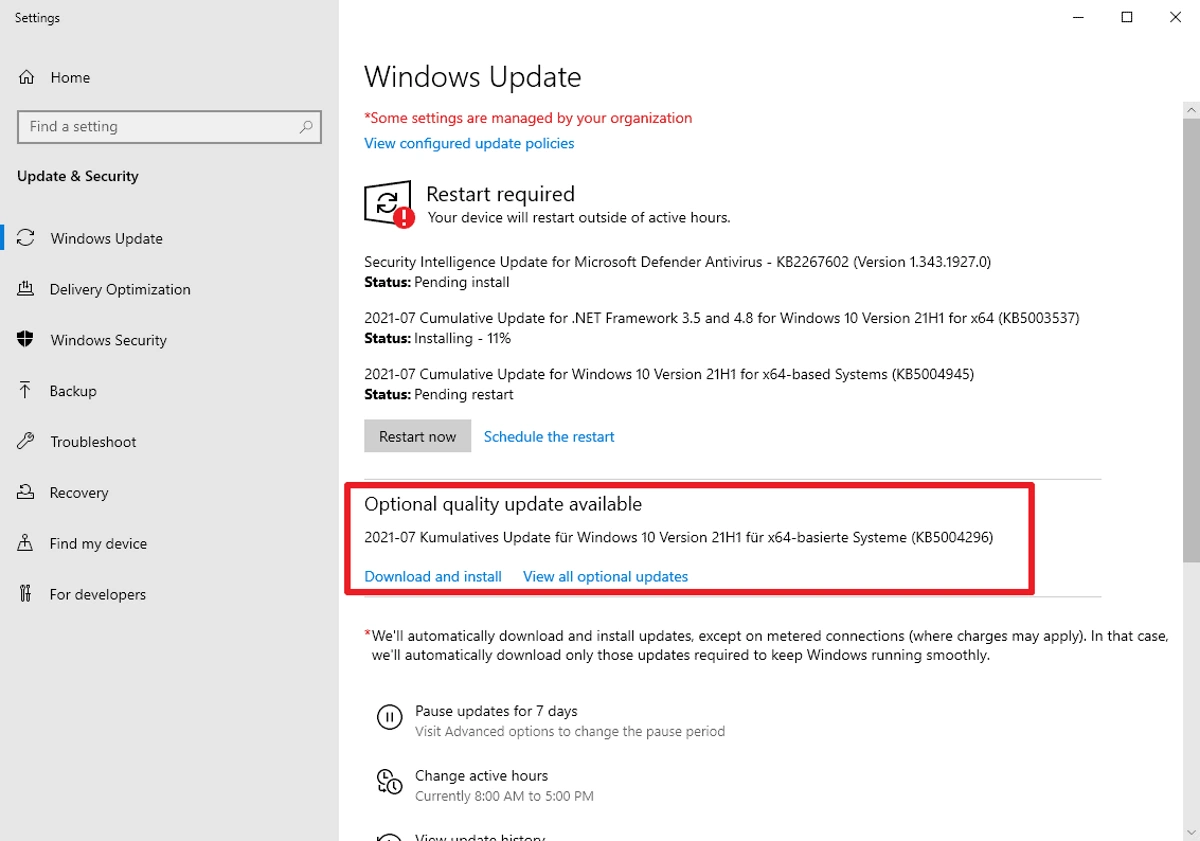Microsoft releases at least two updates for its Windows 10 and 11 operating systems per month. The first update is rolled out on the second Tuesday of the month; it includes security updates for supported versions of the Windows operating system, and is installed automatically on most Home systems (as this is the default configuration).
The second update that Microsoft releases is optional; it is a preview update that includes changes that will be included in the next Patch Tuesday update. Preview updates are not installed automatically and administrators may need to run manual check for updates using the Windows Update section of the Settings app, download the updates manually, or use other update management systems to install these.
Preview updates do not include security patches for Windows. The optional updates may introduce new features in Windows, fix bugs and issues, or make changes to existing features.
The March 2022 preview update for Windows 10 version 21H2 introduced the new search highlights feature, fixed a heap leak that degraded the performance of domain controllers, and fixed a bluescreen issue on some devices when pairing Bluetooth devices.
Tip: check out Should you install Windows 10's Optional Driver updates, which provides a take on optional driver updates. It has been written for Windows 10, but is valid for Windows 11 as well.
Arguments for installing optional Windows updates
Arguments for and against the installation of preview updates exist. The installation of preview updates may fix issues that are experienced on the system. Having issues resolved weeks early is a strong argument for installing optional updates at times.
Some administrators may also use these optional updates to test the changes before they go live on the second Tuesday of the following month. Testing is limited to non-security patches though, and more testing is required to make sure that the security patches do not introduce new issues. Some users like the idea of having the latest updates installed on their devices.
Arguments against installing Windows preview updates
The main argument against installing Windows preview updates is that any update may introduce issues of its own. Why risk installing updates with issues on a system without any issues? The optional updates should be considered beta updates, as Microsoft uses Telemetry from the early distribution to spot issues that these may create on customer systems.
Preview updates may sometimes introduce changes that users may not want or like. Skipping the preview updates pushes the introduction of these changes back a few weeks.
Closing Words
Preview updates may be useful in certain situations. If they fix major issues that users experience, then it may be useful to install the updates to resolve these issues for the users. Most users may want to ignore optional updates most of the time though, as these may introduce issues of their own on the system, and because they are included in the cumulative security updates that Microsoft releases just a few weeks later.
Now You: do you install optional Windows updates?
Thank you for being a Ghacks reader. The post Should you install preview updates for Windows 10 or Windows 11? appeared first on gHacks Technology News.



0 Commentaires